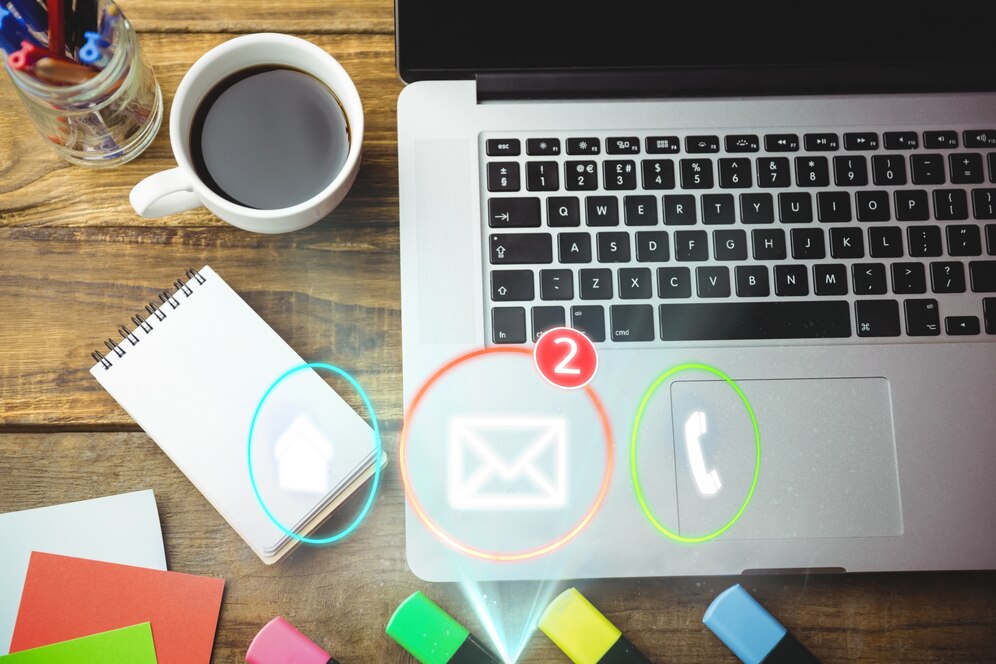Shopify Email Marketing Strategies for Building Lasting Customer Relationships
In the fast-paced world of e-commerce, building lasting customer relationships is crucial for sustained success. While social media and other digital channels play important roles in engaging with customers, email marketing remains one of the most effective tools for nurturing relationships, driving sales, and fostering loyalty. In this comprehensive guide, we’ll delve into the world of Shopify email marketing strategies, exploring how you can leverage this powerful tool to build meaningful connections with your audience, drive conversions, and grow your business.
Importance of Email Marketing for E-commerce Success:
Email marketing continues to be a cornerstone of successful e-commerce strategies for several reasons. First and foremost, it offers a direct line of communication with your audience, allowing you to deliver targeted messages, promotions, and updates directly to their inbox. Unlike social media algorithms, which can limit the reach of your posts, email marketing ensures that your messages are delivered reliably to your subscribers. Additionally, email marketing allows for highly personalized communication, enabling you to tailor your messaging to individual preferences and behaviors. Finally, email marketing provides a high return on investment (ROI), with research showing that every dollar spent on email marketing can generate an average return of $42.
Building an Email List of Subscribers and Customers:
The foundation of any successful email marketing campaign is a robust and engaged email list. Building your email list starts with providing compelling incentives for visitors to subscribe to your emails. This could include offering discounts, exclusive access to promotions or new products, or valuable content such as eBooks or guides. Additionally, make sure to prominently feature your email sign-up form on your Shopify store, using eye-catching design and clear messaging to encourage sign-ups.
Creating Compelling Email Opt-in Incentives:
To entice visitors to subscribe to your email list, it’s essential to create compelling opt-in incentives that provide real value to your audience. Consider offering a discount on their first purchase, access to exclusive content or promotions, or a free gift with sign-up. The key is to offer something that aligns with your audience’s interests and motivates them to take action.
Segmenting Email Lists Based on Customer Behavior and Preferences:

Segmentation is a powerful technique for ensuring that your email marketing messages are relevant and targeted to each subscriber. By dividing your email list into segments based on factors such as purchase history, demographics, and engagement level, you can deliver more personalized and effective messaging. For example, you might send different promotions to first-time customers versus loyal repeat buyers, or tailor your messaging based on geographic location or product preferences.
Shopify Email Marketing Strategies – Personalizing Email Content for Targeted Messaging:
Personalization is key to building meaningful connections with your audience and driving engagement with your email marketing campaigns. Use dynamic content and merge tags to personalize your emails with each subscriber’s name, past purchase history, or other relevant information. Additionally, consider segmenting your email list based on customer preferences or behavior and delivering targeted content based on these segments.
Crafting Attention-Grabbing Subject Lines and Preview Text:
The subject line and preview text are the first things your subscribers see when they receive your email, so it’s essential to make them count. Craft attention-grabbing subject lines that are concise, compelling, and relevant to the content of your email. Use A/B testing to experiment with different subject lines and identify which ones resonate most with your audience. Similarly, pay attention to the preview text, which provides a preview of the email’s content in the recipient’s inbox, and use it to entice subscribers to open the email.
Shopify Email Marketing Strategies – Designing Visually Appealing Email Templates:
Visual appeal plays a significant role in the effectiveness of your email marketing campaigns. Use professionally designed email templates that are visually appealing, on-brand, and optimized for both desktop and mobile devices. Incorporate eye-catching images, colors, and fonts that align with your brand’s aesthetic and messaging. Keep the layout clean and organized, with clear calls-to-action and easy-to-read text.
Incorporating Dynamic Content and Product Recommendations:
Dynamic content allows you to personalize your emails in real-time based on each subscriber’s preferences and behavior. For example, you can use dynamic product recommendations to showcase products that are tailored to each subscriber’s past purchase history or browsing behavior. Additionally, consider incorporating dynamic content such as countdown timers or personalized offers to create a sense of urgency and drive conversions.
Implementing Automated Email Workflows for Welcome Sequences, Abandoned Cart Reminders, and Post-Purchase Follow-ups:
Automated email workflows are a powerful way to deliver timely, relevant messages to your subscribers throughout their customer journey. Set up automated workflows for key touchpoints such as welcome sequences for new subscribers, abandoned cart reminders to recapture lost sales, and post-purchase follow-ups to thank customers for their purchase and encourage repeat business. By automating these processes, you can ensure consistent communication with your audience while saving time and resources.
Shopify Email Marketing Strategies – A/B Testing Email Elements for Optimization:
A/B testing, also known as split testing, allows you to compare two versions of an email or email element to see which performs better with your audience. Experiment with different variables such as subject lines, calls-to-action, images, or email templates to identify what resonates most with your subscribers and drives the highest engagement and conversion rates. Use A/B testing to continuously optimize your email marketing campaigns and improve their effectiveness over time.
Monitoring Email Deliverability and Engagement Metrics:

Monitoring email deliverability and engagement metrics is essential for ensuring that your emails reach your subscribers’ inboxes and drive the desired actions. Track metrics such as open rates, click-through rates, conversion rates, and unsubscribe rates to gauge the effectiveness of your email marketing campaigns. Additionally, keep an eye on email deliverability metrics such as bounce rates and spam complaints to identify any deliverability issues and take corrective action as needed.
Analyzing Email Campaign Performance and ROI:
Analyzing the performance of your email marketing campaigns is key to understanding what’s working well and where there’s room for improvement. Track key performance indicators (KPIs) such as revenue generated, return on investment (ROI), and cost per acquisition (CPA) to assess the overall effectiveness of your email marketing efforts. Use analytics tools and platform insights to drill down into campaign performance data and identify trends, patterns, and areas for optimization.
Utilizing Customer Feedback to Refine Email Content and Timing:
Customer feedback is a valuable source of insights for refining your email marketing strategy and improving the effectiveness of your campaigns. Solicit feedback from your subscribers through surveys, polls, or feedback forms to understand their preferences, interests, and pain points. Use this feedback to inform your email content and timing, ensuring that your messages are relevant, valuable, and well-timed.
Integrating Shopify Email Marketing Strategies with Other Marketing Channels for Cohesive Messaging:
Email marketing doesn’t operate in a vacuum – it’s essential to integrate your email marketing efforts with other marketing channels for a cohesive and consistent brand experience. Coordinate your email marketing campaigns with your social media, content marketing, and paid advertising efforts to deliver a unified message across all touchpoints. For example, promote your email sign-up incentives on social media, or include links to your social profiles in your email campaigns to encourage cross-channel engagement.
Leveraging User-Generated Content for Email Campaigns:
User-generated content (UGC) is a powerful tool for building social proof, credibility, and trust with your audience. Incorporate UGC such as customer reviews, testimonials, and photos into your email campaigns to showcase real-life experiences and perspectives. Use UGC to highlight the benefits and features of your products, reinforce your brand messaging, and inspire confidence in your offerings.
Providing Exclusive Offers and Promotions to Email Subscribers:
Reward your email subscribers for their loyalty and engagement by offering them exclusive offers, promotions, or discounts. Use segmentation to identify high-value subscribers or those who have shown particular interest in your products, and tailor special offers to their preferences. Providing exclusive incentives not only encourages subscribers to stay engaged with your emails but also incentivizes them to make a purchase and become repeat customers.
Shopify Email Marketing Strategies for Optimizing Emails for Mobile Responsiveness:
With a growing number of consumers accessing their email on mobile devices, it’s essential to optimize your email campaigns for mobile responsiveness. Use mobile-friendly email templates that adapt seamlessly to different screen sizes and resolutions, ensuring that your emails are easy to read and navigate on smartphones and tablets. Test your emails across various devices and email clients to ensure a consistent and user-friendly experience for all subscribers.
Adhering to Best Practices for Email Design and Deliverability:
To maximize the effectiveness of your email marketing campaigns, it’s crucial to adhere to best practices for email design and deliverability. This includes using clear and concise subject lines, avoiding spammy language or excessive use of images, and including a visible unsubscribe link in every email. Additionally, maintain a clean and up-to-date email list by regularly removing inactive or disengaged subscribers and adhering to email marketing regulations such as the CAN-SPAM Act and GDPR.
Staying Compliant with GDPR and Other Email Marketing Regulations:
Compliance with email marketing regulations such as the General Data Protection Regulation (GDPR) is essential for maintaining trust and credibility with your audience and avoiding legal repercussions. Ensure that you have obtained explicit consent from subscribers before sending them marketing emails, and provide clear information about how their data will be used and protected. Implement robust data protection measures to safeguard subscriber information and adhere to regulatory requirements for data storage, processing, and consent management.
Experimenting with Different Types of Email Content, Such as Newsletters, Product Updates, and Educational Content:
Variety is key to keeping your email marketing campaigns fresh, engaging, and relevant to your audience. Experiment with different types of email content, such as newsletters, product updates, educational content, or behind-the-scenes glimpses into your business. Tailor your content mix to your audience’s interests, preferences, and buying journey, and use analytics data to gauge which types of content resonate most with your subscribers.
Building and Nurturing Long-Term Relationships with Email Subscribers:
Ultimately, the goal of email marketing is not just to drive immediate sales but to build lasting relationships with your audience that lead to long-term loyalty and repeat business. Focus on providing value, relevance, and personalized experiences to your email subscribers at every touchpoint in their customer journey. Engage with your audience authentically, listen to their feedback, and continuously refine your email marketing strategy to meet their evolving needs and preferences.
Unlock the Full Potential of Shopify Email Marketing Strategies:
In conclusion, Shopify email marketing offers a powerful platform for building and nurturing meaningful relationships with your audience, driving engagement, and ultimately, driving sales and revenue for your e-commerce business. By leveraging the strategies and best practices outlined in this guide – from building an engaged email list to creating compelling content, segmenting your audience, and analyzing performance metrics – you can unlock the full potential of email marketing and achieve sustained success in the competitive e-commerce landscape. Remember to stay agile, experiment with new approaches, and continuously iterate on your email marketing strategy based on feedback and data to drive long-term growth and profitability for your Shopify store.


